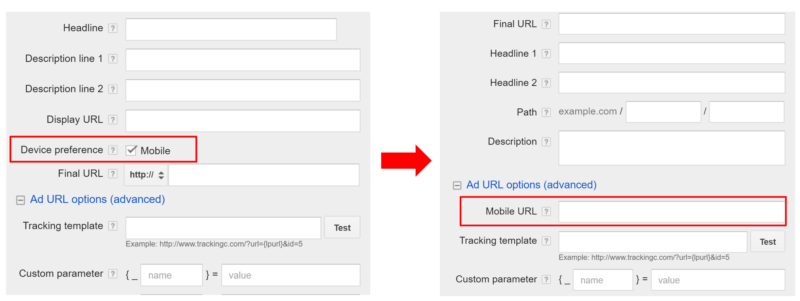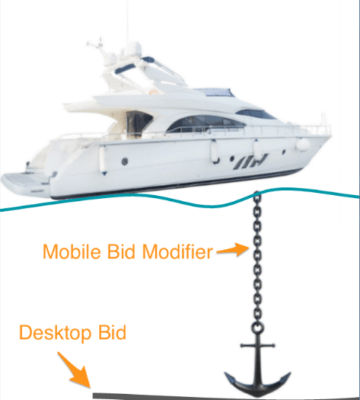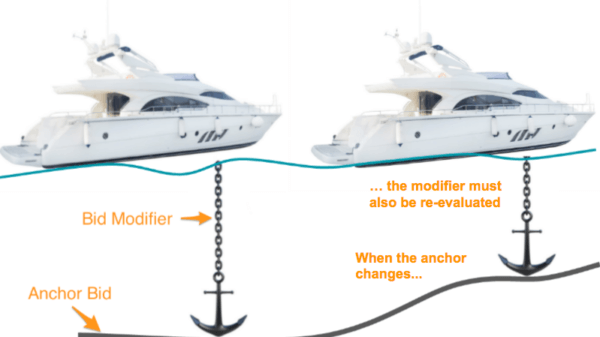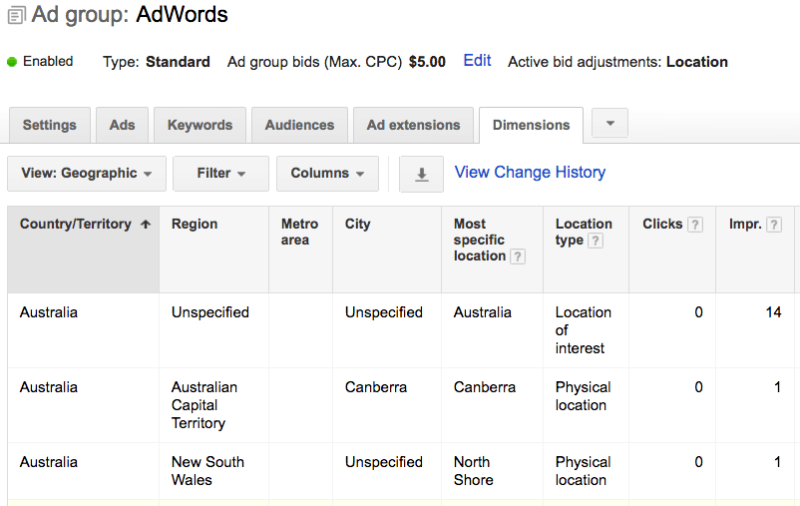Why it’s time to re-evaluate your AdWords account structure
Many changes and new features have rolled out recently in AdWords, and columnist Frederick Vallaeys believes this is the perfect opportunity to review your account structure.

We’re now seeing many of the changes AdWords announced in May rolling out to all accounts. This is great news in terms of enabling new opportunities, but it’s bad news if you thought your account was perfectly structured.
While each new feature will work just fine with your current account structure, your setup may no longer be the most efficient — so now may be a great time to revisit the AdWords account structure debate. I’ll cover how each of the new features may change your opinion on the right structure for an AdWords account.
Expanded text ads (ETAs)
All accounts now have the capability to create ETAs. Because results have been mixed, as reported by Andy Taylor and Ginny Marvin, I recommend not removing legacy ads — for now, at least. While Google has announced a firm date when it will no longer be possible to create legacy ads (October 26, 2016), they have not announced when legacy ads will no longer be served. So, if legacy ads sometimes outperform your new ads, there’s no rush to make the switch.
When determining which ad to keep, you’ll obviously want to look beyond just the click-through rate (CTR). Google has been touting the CTR improvements in some of their case studies, but we really should be evaluating the new ads’ impact on metrics like “conversions per impression,” which combines CTR and conversion rate.
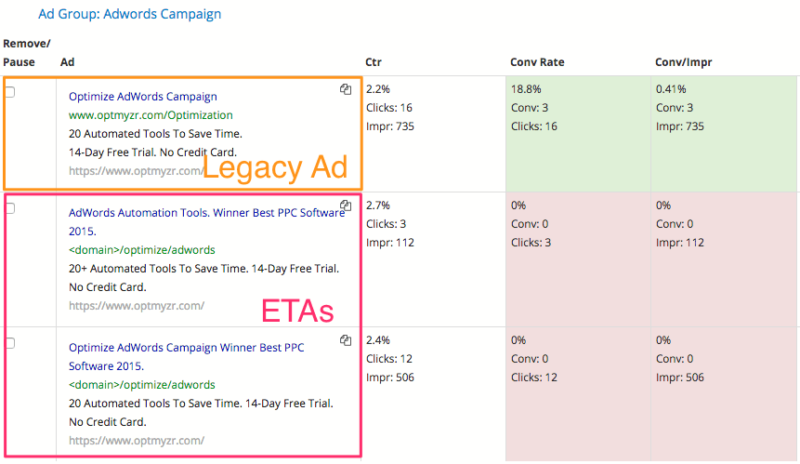
In this illustration from our own Optmyzr account, you can see an example where the legacy ads and expanded ads are in a dead heat when it comes to CTR, but the legacy ad is converting much better.
Expanded Text Ads and account structure considerations
The reason ETAs have an impact on account structure is that there is no support for mobile-preferred ads. In other words, the same ETA will be shown on all device types.
If in the past you found that different messages worked better on mobile devices, you were able to indicate to Google that you preferred a different ad to be used for searches on those devices. That is no longer possible, and after October 26, any new ad you create will run on all devices.
Knowing Google, I am confident that the ads quality system will know which ad variant performs best on a certain device and that they will show that ad. This means that you should have at least two ad variations per ad group, but that’s nothing new; we should all be testing multiple ad variations already.
Of course, Google’s way of evaluating the best ad is normally based on CTR, so you may still not get the benefit of showing the ad that nets you the most conversions. This is where the new “perfect structure” comes into play. To gain back the control that was lost in this launch, you may want to have separate ad groups for different devices.
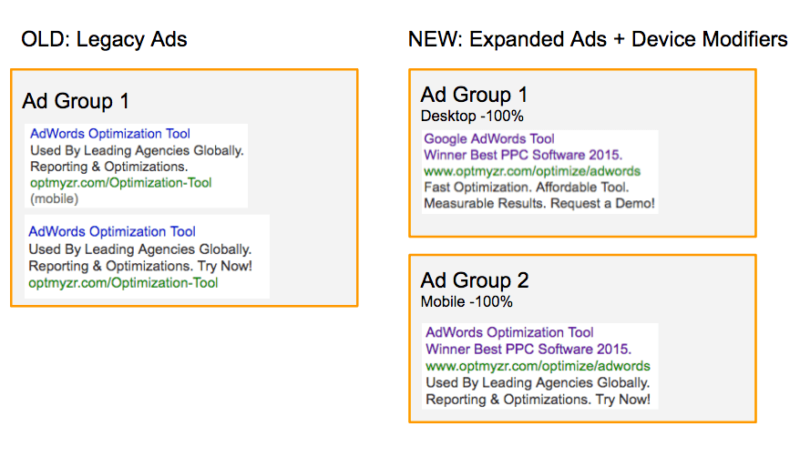
Legacy ads have the option to specify a mobile-preferred option so one ad group can easily cover all devices. Expanded Text Ads don’t have a mobile-preferred option, so if you want to show different ads on different devices, you need separate ad groups.
The structure above is now possible thanks to the new way device bid modifiers work. I’ll explain those in the next section.
Device bid modifiers
It is now becoming possible to set bid modifiers for all device types. In the old desktop-first world, you could only set bid modifiers for mobile devices, meaning that ads would always run on desktop, and mobile could be enabled with a bid modifier greater than -100%. It was not possible to run ads only on mobile devices (not counting some workarounds like setting a really low CPC and a very high mobile bid modifier.)
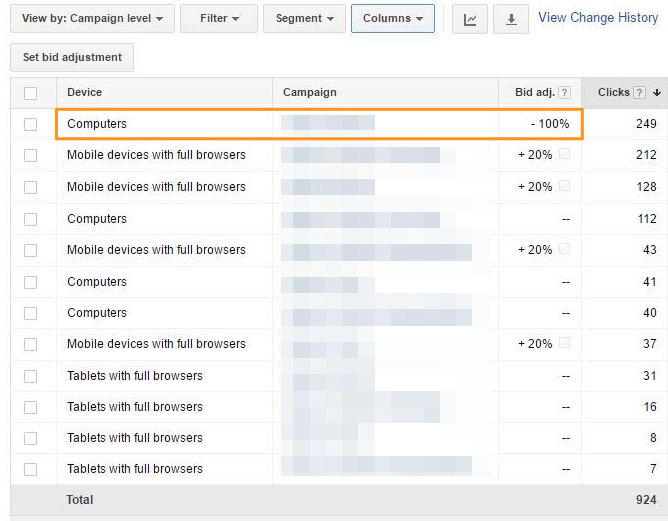
Now you can set device bid modifiers for all three device types, making it possible to run different ad groups for each device.
The ability to set modifiers for all devices is currently in the process of rolling out gradually to all accounts. Once your account has this new capability, you can once again run separate campaigns for each device, just like before the controversial launch of “Enhanced Campaigns” in 2013.
So, is Google realizing it made a mistake with Enhanced Campaigns, and that’s why they’re re-introducing this capability now? I don’t believe so; in fact, I think they’ve achieved what they wanted: to get advertisers to wake up and notice that mobile was quickly becoming the dominant device on which users were searching. By forcing all advertisers to show ads on mobile devices by default, Google was able to bring the masses along. Now that they’ve made sure all advertisers are set up to be successful in a world where mobile dominates, they’re pushing capabilities for a mobile-first world even further by making it possible for advertisers to opt out of advertising on desktops. While this isn’t for everyone, I have certainly heard several examples of advertisers who don’t care much for having their ads appear on desktop searches.
How device bid modifiers impact the perfect account structure
The implications for the “perfect structure” of this change should be pretty obvious. More control can be gained by running separate campaigns for computers, tablets and high-end mobile devices.
One interesting little nuance is that device bid modifiers can be set at the ad group level, so, whereas advertisers may have run device-specific campaigns before 2013, now they can do this or run device-specific ad groups. Here are a few of the benefits of each option.
Benefits of running device-specific campaigns:
- Maintain different budgets for each device.
- Use different geo settings like targets or bid modifiers for each device (more on that later).
- Use different RLSA modifiers per device.
- Soon, use different demographic settings per device (I am assuming these will be at the campaign level, though I have not confirmed this).
- Run different ads per device.
- Target different keywords and maintain device-specific negative keyword lists.
Benefits of running device-specific ad groups:
- Simpler account structure, while still benefiting from device level bids.
- Run different ads per device.
- Target different keywords and maintain device-specific negative keyword lists.
Benefits of using bid modifiers and not splitting current ad groups:
- Keep the account structure much simpler.
- Maintain different bids per device.
I do NOT recommend jumping on this new capability and duplicating all your campaigns or ad groups and splitting them out by device. Doing so adds a significant amount of complexity to your account. New keywords have to be added in multiple places, changes to promotions in ad text have to be made in multiple places, how you handle reporting will probably change and so on.
I do recommend taking a close look at your most important keywords and understanding if there are differences in performance across devices that warrant a change that goes beyond setting different bids. If so, then consider using a new account structure for just these keywords.
How bid management changes with device bid modifiers
The new device bid modifier capabilities raised an interesting possibility in my mind for a way to simplify bid management.
Bid management in AdWords can be simple thanks to Portfolio Bid Strategies, but it can also get immensely complex for those who manage bids manually. Working with a lot of agencies and having seen plenty of bid management companies falter because producing great results with a black-box system is hard, I personally prefer bidding methods that allow for some human oversight while still taking advantage of machine learning, artificial intelligence and automation, something like Enhanced CPC bids. We also learned that Google’s bid automation uses a 30-day lookback window and can’t properly account for seasonality at a recent API developer event we attended, another reason why some advertisers should create their own bid rules.
The complexity of bid management is mostly because there are two layers — CPCs and modifiers — and they control different things. The max CPC up until now was used to set the bid for ads shown on computers. Bid modifiers were used to transform that bid into a bid for mobile devices. This meant that an advertiser who recalculated her bids based on changes in performance on computers would immediately need to recalculate the mobile modifier to make sure that those bids also remained correct. The interconnectedness of bids makes mistakes more likely, in my opinion.
Google in its announcement about the new device bid modifiers uses the term “anchoring bids,” so let me try to explain this concept by combining boating and PPC. I hear both can get wildly expensive if you don’t do it right.
In this illustration, the dark gray line at the bottom represents the ocean floor, as well as our max CPC bid for computers. Our bids are “anchored” here, so the chain between the yacht and the floor represents our mobile bid modifier. The right modifier is the one that keeps the chain tight, so the yacht stays where it needs to.
The complexity sets in when the conditions change, like when the yacht moves to a new harbor where the water is a different depth. (Fun fact: Did you know that the water levels of the Pacific Ocean and Atlantic Ocean are not the same? Weird, right?) If the captain keeps the chain on the anchor at the same length, his yacht won’t stay in place very well.
In the PPC world, a change in conditions on computer-based searches impacts what you need to do with your bid modifiers for mobile devices. This can get confusing, and sometimes advertisers simply overlook the connection and end up with bad bids. In fact, advertisers may even calculate their anchor CPC bids using data from all devices, when the correct way to calculate bids is to use data segmented for each device.
All of this gets even more confusing when you layer in geo bid modifiers, time of week bid modifiers, RLSA bid modifiers (which will soon become available at the campaign level), and starting September 19, demographic modifiers for search ads. I wrote a free script that helps advertisers better understand how much they’re really bidding after all modifiers are layered in, and the outliers can be shocking.
So all of this got me thinking about how to remove some of that complexity. Here’s one method my team and I came up with: Set an artificial fixed CPC, and use all three devices’ modifiers to dial in the correct bids for each device.
As you can see, now bids for one device are no longer dependent on those of other devices, and it’s much easier to know how much you’re bidding. Unfortunately, though, because device modifiers can only be set down to the ad group level, this method only works well if you use single-keyword ad groups, so that the ad group modifier is effectively also the keyword bid modifier. In the great AdWords structure debate, this is another vote for SKAGs (single keyword ad groups).
Geo modifiers
While there hasn’t been any change in how geographic bid modifiers work, I had an interesting insight during a recent #ppcchat session on Twitter. A lot of advertisers reported that they add bid targets to their campaigns to make it easier to set bid adjustments later. Adding all the locations is a lot of initial setup work, and it’s not actually necessary to do because AdWords reports location data in the Dimensions tab.
So if an ad is targeting Canada, it will by default appear to users in Vancouver. Even if you don’t specifically add the city of Vancouver to your targeting list, you can still get a report of the ad’s performance in Vancouver from AdWords. Then, when you find that there are significant differences in performance, you can add a bid modifier for this city. The same works for all the other geo targeting levels like regions and ZIP codes.
The problem I see with advertisers adding regions as targets and then only modifying bids for these locations is that they can easily overlook opportunities from more narrowly defined locations like cities or postal codes. We have a good optimization in Optmyzr (my tool) that handles this, but with a bit of spreadsheet wizardry, it’s easy for anyone to do this themselves.
Demographic modifiers
Starting on September 19, 2016, it will become possible to add demographic bid modifiers to search campaigns. You will be able to target by age range and gender. Based on the post, it seems this will be a campaign-level setting, so if you find big differences in demographic performance across ad groups in the same campaign, it may be beneficial to split out these ad groups into separate campaigns. It’s another new reason why a more granular structure may be the right choice.
Conclusion
There have always been good reasons to split up campaigns more granularly. Now, with the loss of mobile-preferred ads and the arrival of device bid modifiers for all devices, it may be a great time to re-evaluate if your account structure is still the best one to get you amazing results.
Ultimately, the answer will be different for each advertiser, and even for each ad group and will also depend on whether the cost of the labor or the tools needed to manage a more complex account structure is lower than the performance gains achieved from this structure.
At the very least, we should all understand how the recent changes in AdWords have changed the arguments for the perfect account structure. Hopefully, by reading this, you have that better understanding now.
Contributing authors are invited to create content for Search Engine Land and are chosen for their expertise and contribution to the search community. Our contributors work under the oversight of the editorial staff and contributions are checked for quality and relevance to our readers. The opinions they express are their own.
Related stories
